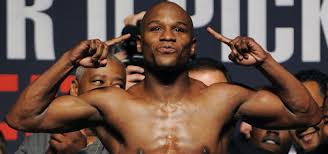Do you want BuboFlash to help you learning these things? Or do you want to add or correct something? Click here to log in or create user.
#analyst-notes #has-images #money #reading-agustin-carsten


Deposits are money, but checks are not - a check is an instruction to a bank to transfer money.
If you want to change selection, open original toplevel document below and click on "Move attachment"
y acquired when one borrows funds, while money is a financial asset that provides the holder with future purchasing power. However, the widespread use of credit cards will tend to reduce the average quantity of money people hold. <span>Deposits are money, but checks are not - a check is an instruction to a bank to transfer money. <span><body><html>
unt by which a change in the monetary base is multiplied to calculate the final change in the money supply. Money Multiplier = 1/b, where b is the required reserve ratio. In our example, b is 0.2, so money multiplier = 1/0.2 = 5. <span>Definitions of Money There are different definitions of money. The two most widely used measures of money in the U.S. are: The M1 Money Supply: cash, checking accounts and traveler's checks. This is the narrowest definition of the money supply. This definition focuses on money's function as a medium of exchange. The M2 Money Supply: M1 + savings + small time deposits + retail money funds. This definition focuses on money's function as a medium of exchange and store of value. Credit cards are not purchasing power, but instead are a convenient means of arranging a loan. Credit is a liability acquired when one borrows funds, while money is a financial asset that provides the holder with future purchasing power. However, the widespread use of credit cards will tend to reduce the average quantity of money people hold. Deposits are money, but checks are not - a check is an instruction to a bank to transfer money. The Quantity Theory of Money Money Supply (M) x Velocity of Money (V) = Price (P) x Real Output (Y) The velocity of money is the average n
Parent (intermediate) annotation
Open ity acquired when one borrows funds, while money is a financial asset that provides the holder with future purchasing power. However, the widespread use of credit cards will tend to reduce the average quantity of money people hold. <span>Deposits are money, but checks are not - a check is an instruction to a bank to transfer money. <span><body><html>
Original toplevel document
Subject 1. What is Money?unt by which a change in the monetary base is multiplied to calculate the final change in the money supply. Money Multiplier = 1/b, where b is the required reserve ratio. In our example, b is 0.2, so money multiplier = 1/0.2 = 5. <span>Definitions of Money There are different definitions of money. The two most widely used measures of money in the U.S. are: The M1 Money Supply: cash, checking accounts and traveler's checks. This is the narrowest definition of the money supply. This definition focuses on money's function as a medium of exchange. The M2 Money Supply: M1 + savings + small time deposits + retail money funds. This definition focuses on money's function as a medium of exchange and store of value. Credit cards are not purchasing power, but instead are a convenient means of arranging a loan. Credit is a liability acquired when one borrows funds, while money is a financial asset that provides the holder with future purchasing power. However, the widespread use of credit cards will tend to reduce the average quantity of money people hold. Deposits are money, but checks are not - a check is an instruction to a bank to transfer money. The Quantity Theory of Money Money Supply (M) x Velocity of Money (V) = Price (P) x Real Output (Y) The velocity of money is the average n
Summary
| status | not read | reprioritisations | ||
|---|---|---|---|---|
| last reprioritisation on | suggested re-reading day | |||
| started reading on | finished reading on |
Details
Discussion
Do you want to join discussion? Click here to log in or create user.